Christie’s Carpets soar to $4million
Daniel Shaffer reports: Christie’s well-attended King Street sale of ‘Oriental Rugs and Carpets’ in London on Tuesday 8 April 2014 was a triumph for consignors and, a rare thing these days, a pleasure to attend. With lively bidding in the room, on the phones, in the book, and online, more than three-quarters of the 145 lots sold, many well above usually sensible estimates, yielding a total of not far short of £4 million, proving that the combination of good quality, good provenance and good cataloguing is hard to beat.
Of course, it helps to open with a consignment of such superb quality as the collection of the late Peter Lehmann-Bärenklau (lots 1-26), much of which had been carefully acquired between the 1950s and 1980s from some of Germany’s leading rug dealers, including Ulrich Schürmann and the Herrmanns. The collection included both lot 20, the early 16th century Baillet-Latour Mamluk carpet, as expected top lot on the day at £782,500/$1,295,820, more than double its high estimate. So too was lot 22, the Dirksen Cairene carpet, also 16th century, and with added Bernheimer provenance, which was second highest at £482,500/$799,020. Another ex-Bernheimer piece, lot 13, a 17th century west Anatolian coupled-column prayer rug, surely a strong candidate for best of type, was a bargain at £116,500/$192,925, while lot 22, a ‘Damascus’ compartment or ‘chessboard’ carpet, was bought by ‘a European Institution’ for £80,500/$133,310. The Mamluk, the Cairene and the prayer rug each set a new world record at auction for their respective types.

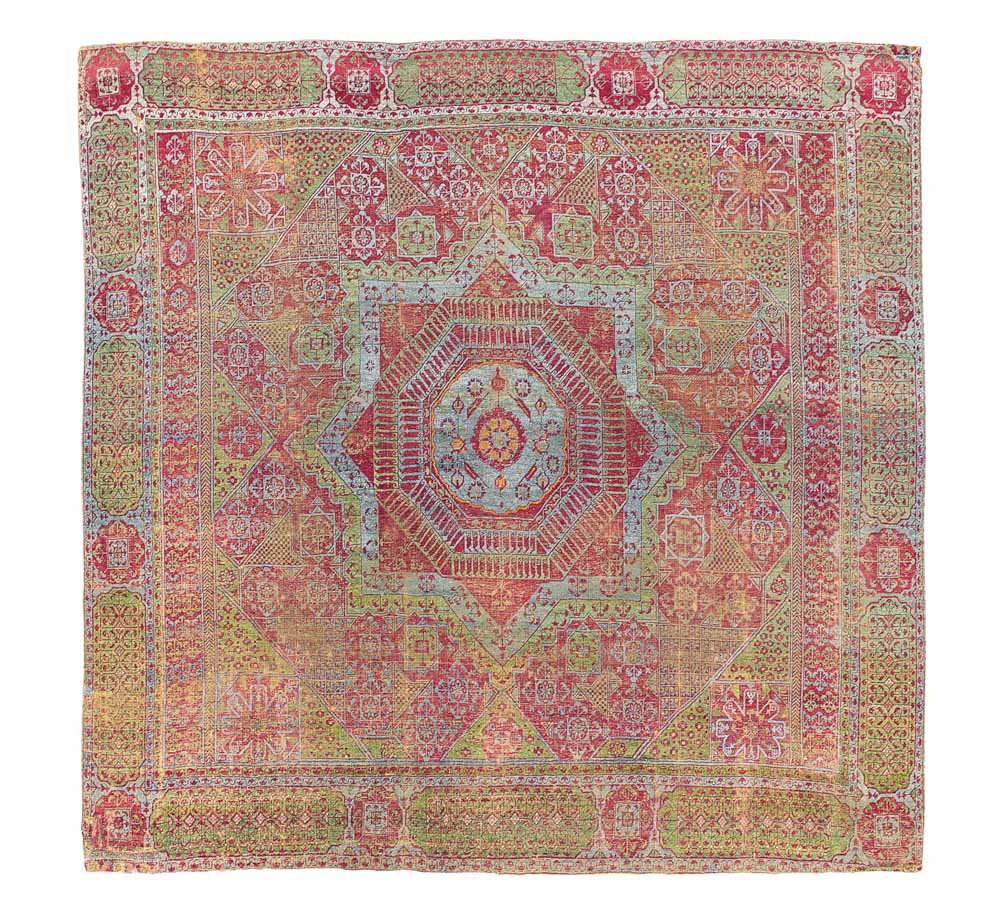
Lot 20 THE BAILLET-LATOUR MAMLUK CARPET EGYPT, PROBABLY CAIRO, EARLY 16TH CENTURY 8ft.6in. x 7ft.11in. (258cm. x 240cm.)
Estimate £250,000-350,000, sold for £782,500
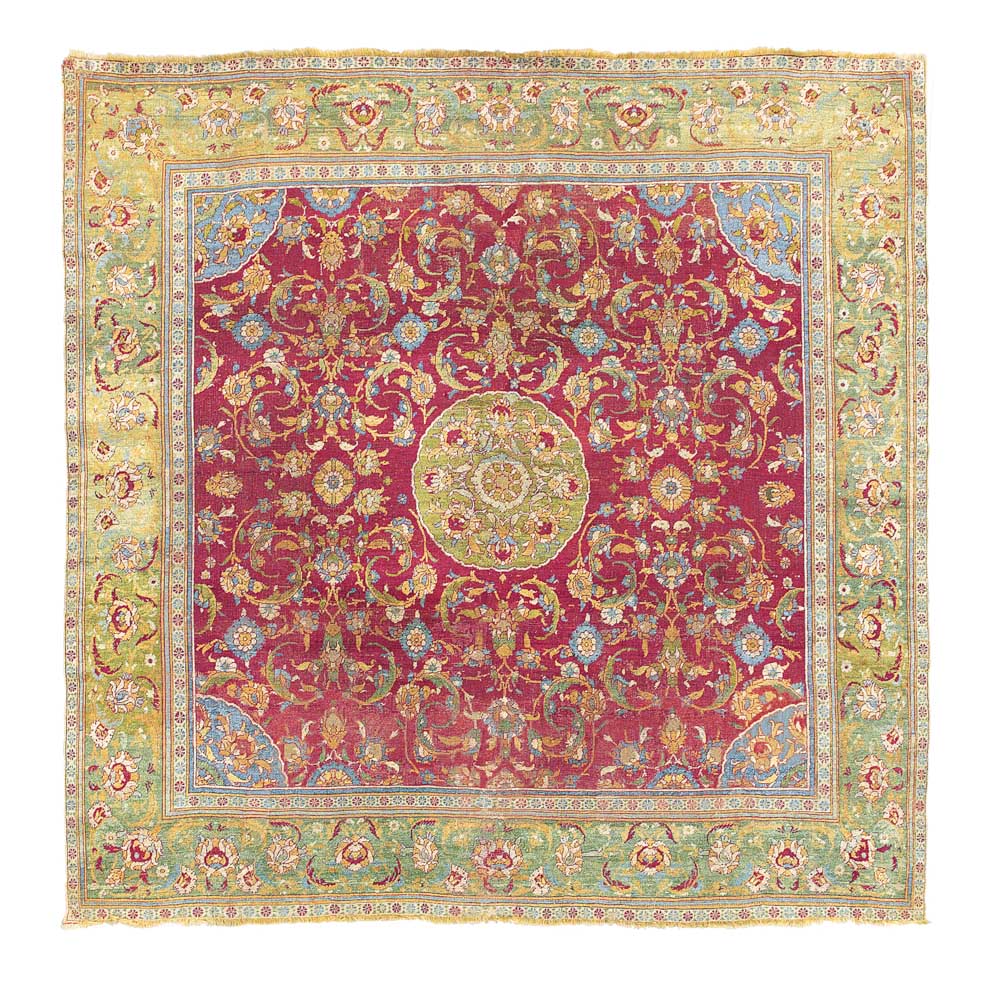
Lot 22 THE DIRKSEN CAIRENE CARPET EGYPT, SECOND HALF 16TH CENTURY 8ft.3in. x 8ft.2in (251cm. x 248cm.)
Estimate £150,000-200,000, sold for £482,500
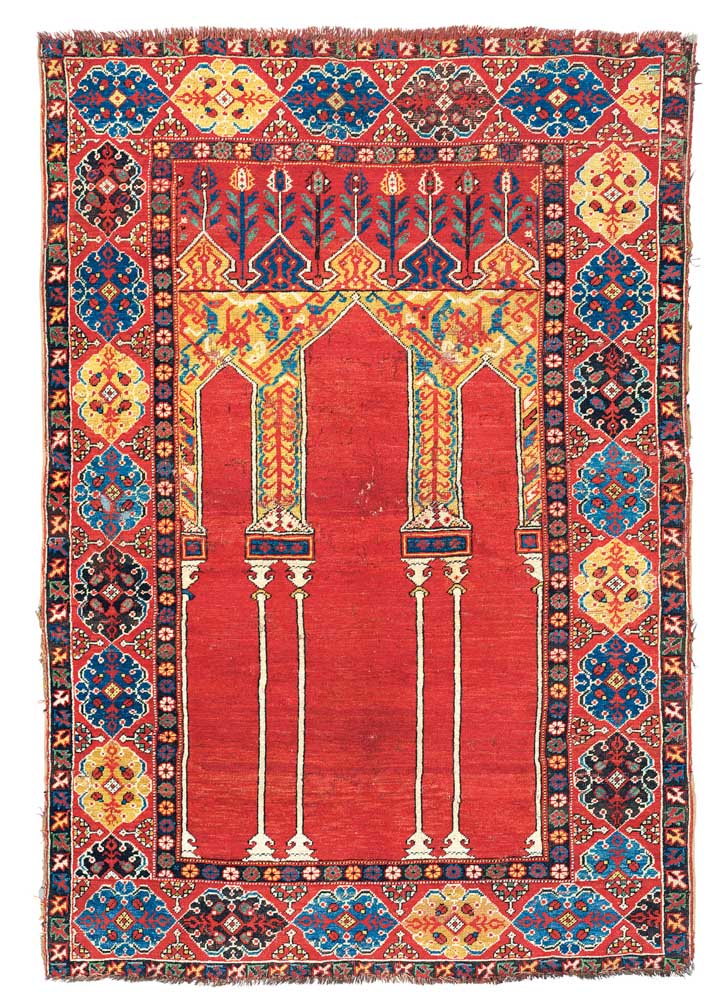
Lot 13 THE BERNHEIMER COUPLED-COLUMN PRAYER RUG WEST ANATOLIA, MID 17TH CENTURY 5ft.1in. x 3ft.7in. (155cm. x 108cm.)
Estimate £50,000-80,000, sold for £116,500
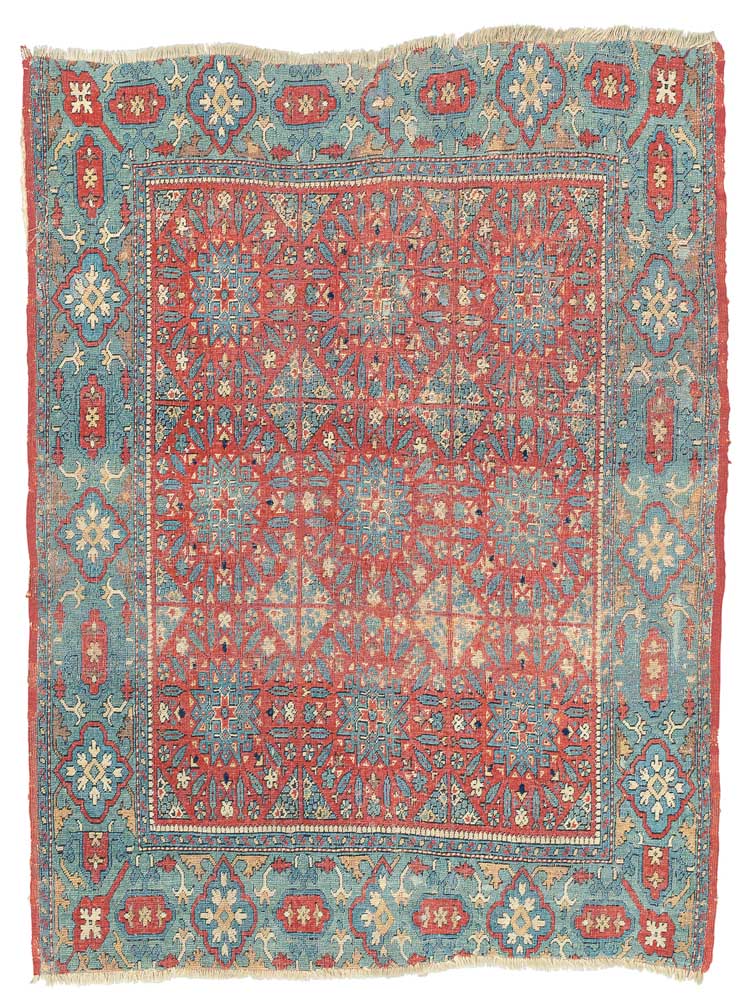
Lot 21 A CHEQUERBOARD RUG PROBABLY DAMASCUS, SYRIA, 16TH CENTURY 6ft.1in. x 4ft.7in. (184cm. x 140cm.)
Estimate £60,000-80,000, sold for £80,500
The Lehmann-Bärenklau consignment also contained a superb, evidently old, Daghestan/northeast Caucasian long rug with an open blue field, lot 19, which made £47,500/$78,660. Lot 12, the 17th/18th century Bergama rug that had once been Martin Volkmann’s pride and joy, was sold in the room to a private bidder, an art collector, who was a prolific buyer throughout the sale, for £40,000/$66,240. An unusual but striking Zeikhur sumakh runner made £10,625/$17,650, and a choice of other collectable 19th century central Anatolian (yellow-ground Konya), Turkmen (mainly Middle Amu Darya types), and Tibetan rugs performed above expectations.

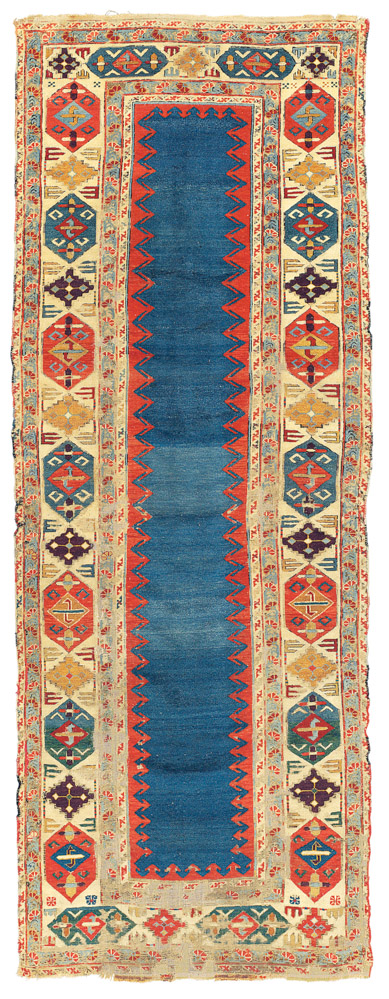
Lot 19 DAGHESTAN RUNNER, NORTHEAST CAUCASUS, LATE 18TH CENTURY 8ft.6in. x 3ft.2in. (258cm. x 96cm.)
Estimate £18,000-24,000, sold for £47,500

Lot 12 THE VOLKMANN BERGAMA RUG WEST ANATOLIA, LATE 17TH OR EARLY 18TH CENTURY 7ft.2in. x 5ft.4in. (218cm. x 163cm.)
Estimate £20,000-30,000, sold for £40,000
Only one of this opening tranche of 26 lots, including two classic large-format early carpet volumes, failed to sell, and five, the Mamluk, the Cairene, the coupled-column, the Daghestan, and a beautiful little Beshir prayer rug (£15,000/$24,915) went to the same phone bidder, likely a Middle Eastern institution.
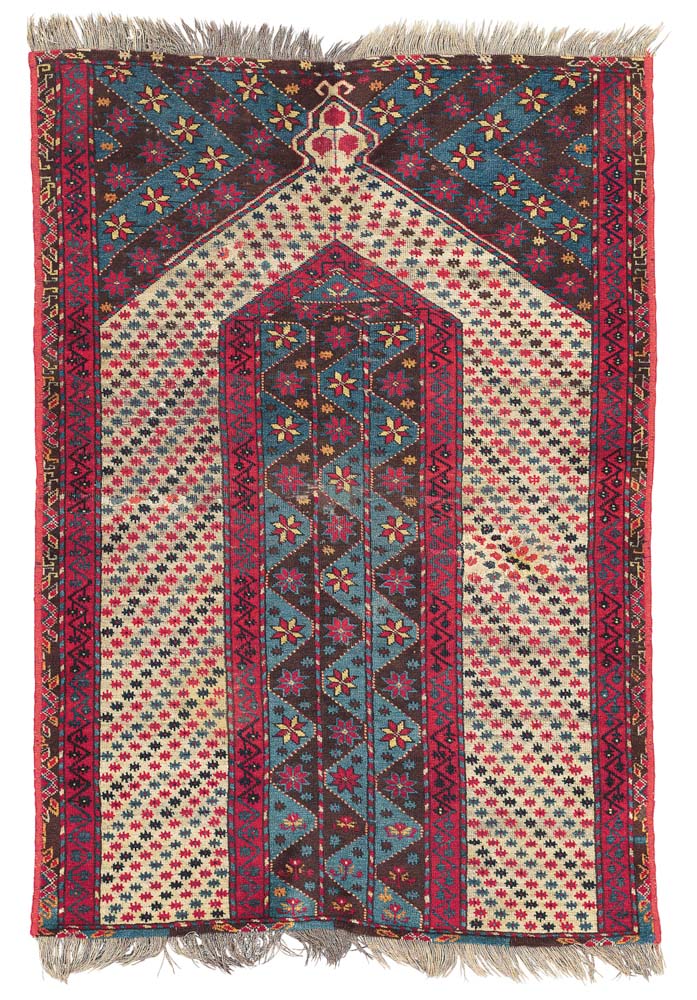
Lot 8 THE BERNHEIMER BESHIR PRAYER RUG, MIDDLE AMU DARYA REGION, CIRCA 1800 4ft.3in. x 3ft. (129cm. x 91cm.)
Estimate £5,000-7,000, sold for £15,000
Elsewhere in a sale of many highlights, a large, rather worn but very interesting ‘dragonless’ 18th century Caucasian Dragon carpet, lot 33, that had cost £3,300 in the same rooms in 1981, fetched £20,000/$33,220. Eberhart Herrmann, in the room, bought lot 46, a delightful miniature northwest Persian silk rug from a ‘Qajar Princely Collection’ for the same price.

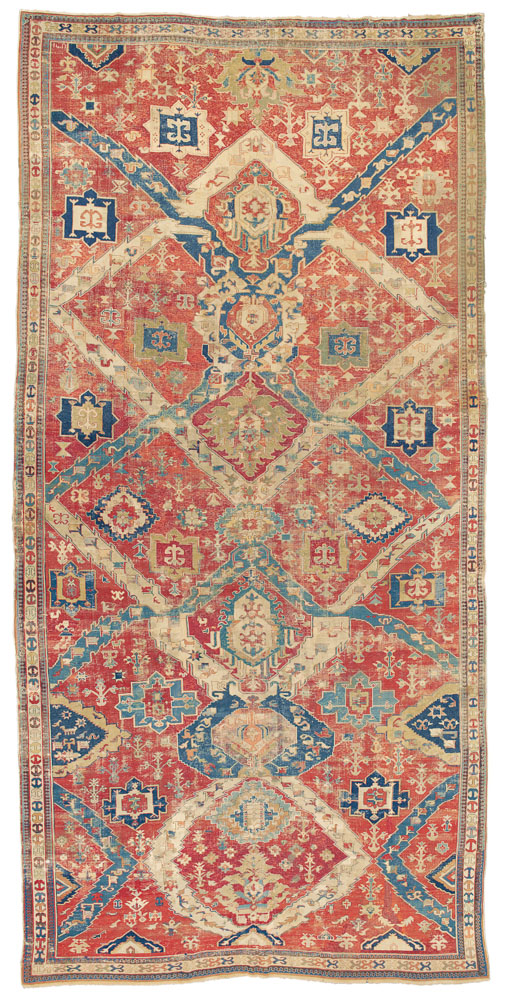
Lot 33 A CAUCASIAN ‘DRAGON’ CARPET PROBABLY KARABAGH, SOUTH CAUCASUS, LATE 18TH CENTURY 18ft.5in. x 8ft.8in. (559cm. x 263cm.)
Estimate £10,000-15,000, sold for £20,000
Consigned by a Florentine private collection, lot 50, a rare 16th century Star Ushak carpet with an unusual light blue field, passed during the sale, but was sold at low estimate immediately afterwards for a total of £86,500/$143,675.

Lot 50 A ‘STAR’ USHAK CARPET WEST ANATOLIA, LATE 16TH CENTURY 10ft. x 6ft.5in. (304cm. x 194cm.)
Estimate £70,000-100,000, sold for £86,500
The batch of mainly Caucasian rugs consigned by the veteran Seattle collector Jim Burns (lots 65-78) fared rather less well, with several bought-in against challenging estimates. Other did find new homes, however, most notably lot 71, a brown-ground 18th century south Caucasian runner with a bold palmette design, which made £47,500/$78,900, an outsize Khotan ‘Palace’ carpet, lot 75, that fetched £32,500/$53,985, and lot 78, an 18th century east Anatolian village rug with countless animals, missing its outer borders, which was sold to a live internet bidder for £21,250/$35,295.

Lot 71 A SOUTH CAUCASIAN RUNNER 18TH CENTURY 13ft.10in. x 3ft.10in. (421cm. x 116cm.)
Estimate £45,000-55,000, sold for £47,500
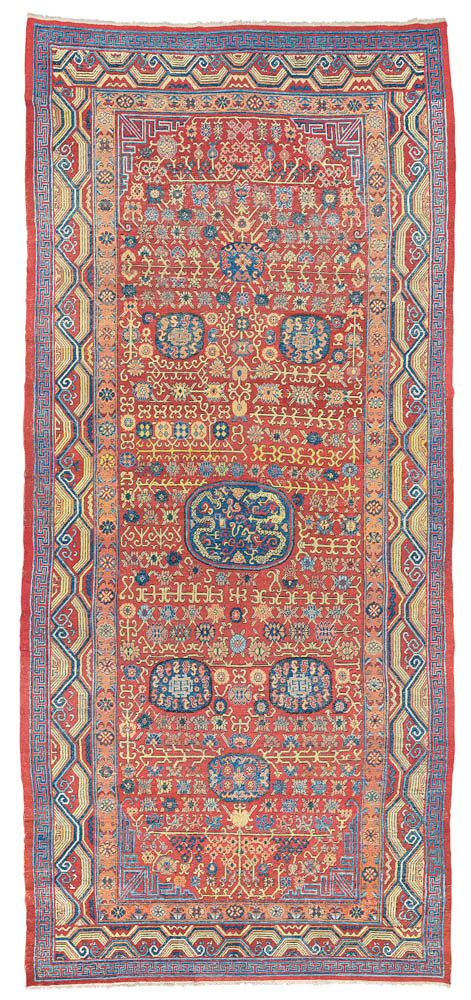
Lot 75 A LARGE KHOTAN PALACE CARPET EAST TURKESTAN, CIRCA 1800 20ft.7in. x 9ft. (625cm. x 273cm.)
Estimate £30,000-50,000, sold for £32,500
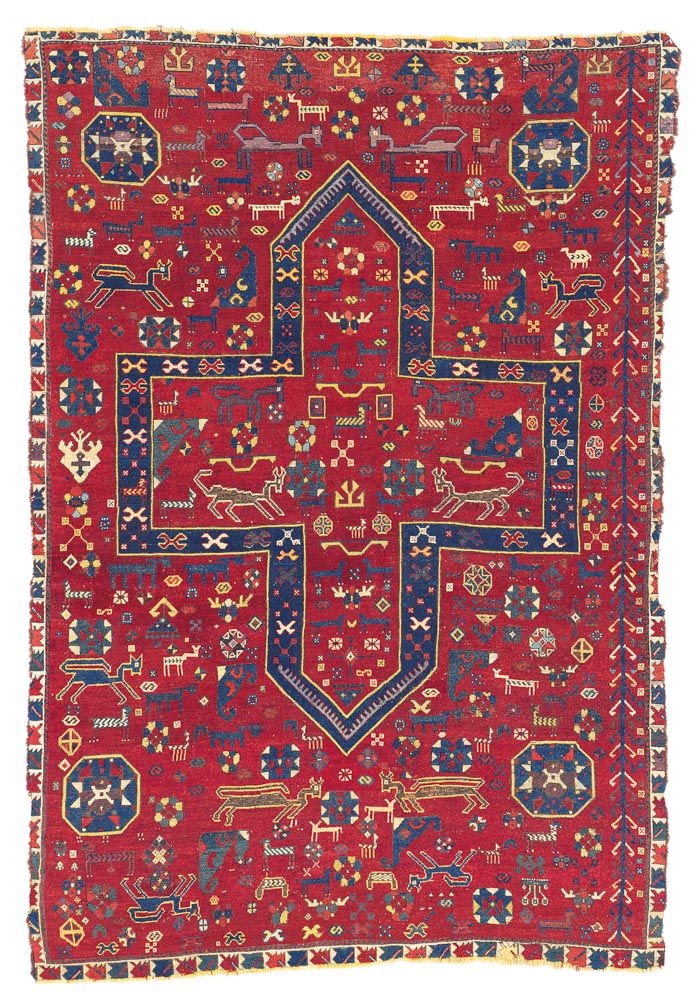
Lot 78 AN EAST ANATOLIAN RUG PROBABLY KARS, LATE 17TH OR EARLY 18TH CENTURY 6ft.6in. x 4ft.5in. (198cm. x 135cm.)
Estimate £20,000-30,000, sold for £21,250
The Burns runner was the first of a carefully selected package of top quality lots that went to a single telephone buyer, perhaps the same as the batch discussed above. Next was the Rothschild Kerman arabesque carpet, lot 84, a very orderly and disciplined if rather cramped late 17th century member of the vase group, in excellent condition, for which the bidder paid £230,500/$382,860. He (or she) went on to pay £10,000/$16,610 for lot 88, a Beshir prayer rugs that had been published in 1922 by Hartley Clark, and £56,250/$93,430 for lot 90, a beautiful, large, Tekke Turkmen ‘bird’ asmalyk (wedding camel flank trapping), both from the collection of the late Charles Damiano (lots 85-100), finishing with lot 96, the auction catalogue cover illustration, Damiano’s wonderfully colourful and beautifully drafted 16th century Ushak medallion design variant, which cost £230,500/$382,860.

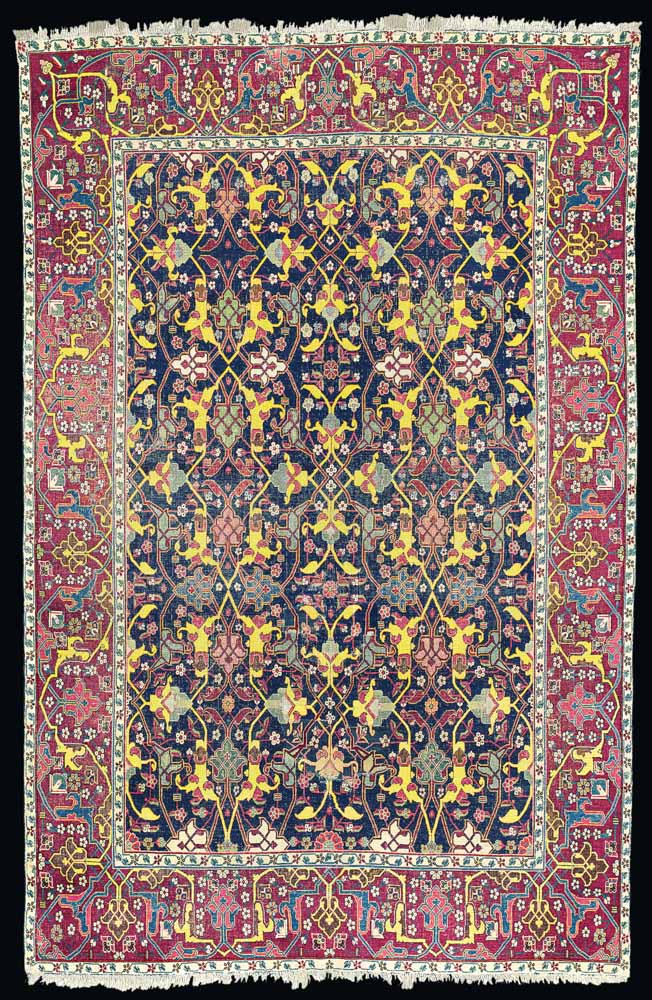
Lot 84 THE ROTHSCHILD KERMAN ARABESQUE VASE CARPET, SOUTH EAST PERSIA, LATE 17TH CENTURY 9ft.2in. x 5ft.11in. (278cm. x 180cm.)
Estimate £80,000-120,000, sold for £230,500
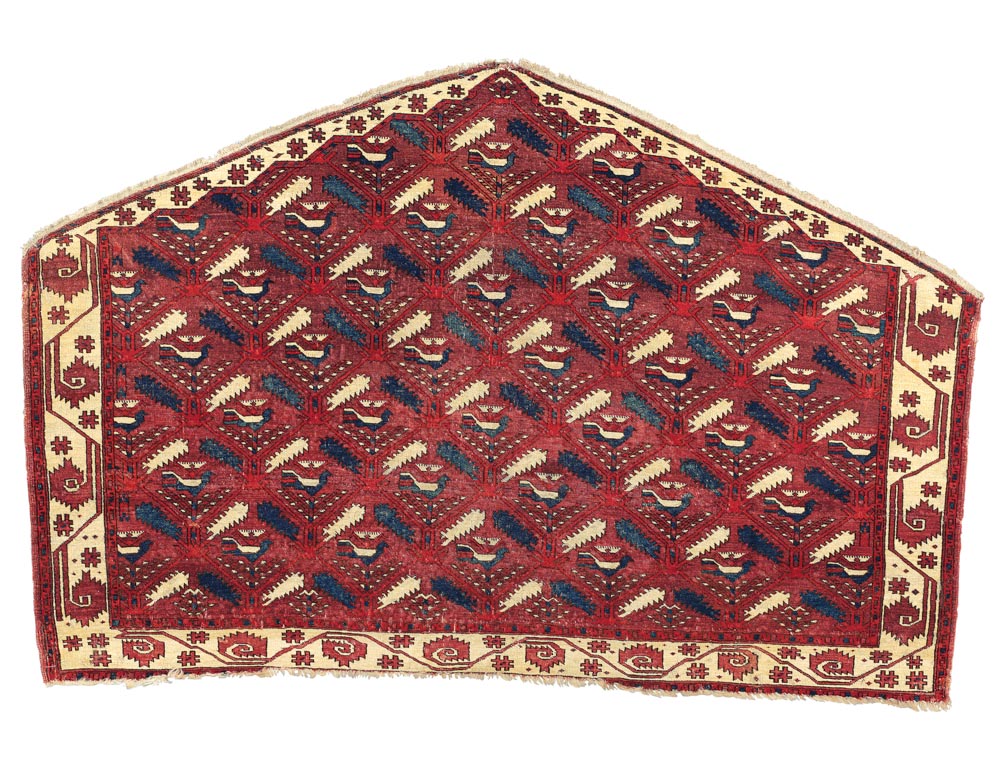
Lot 90 TEKKE TURKMEN BIRD ASMALYK, WEST TURKMENISTAN, CIRCA 1800 3ft. x 4ft.6in. (90cm. x 137cm.)
Estimate £20,000-30,000, sold for £56,250
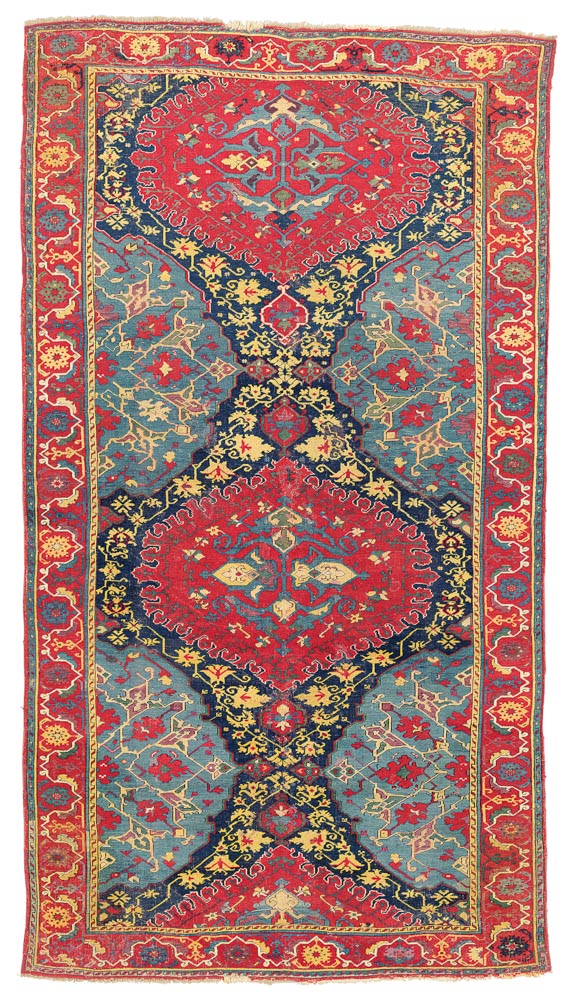
Lot 96 A ‘VARIANT’ MEDALLION USHAK CARPET, WEST ANATOLIA, LATE 16TH CENTURY 11ft.6in. x 6ft.4in. (348cm. x 193cm.)
Estimate £40,000-60,000, sold for £230,500
In addition to the asmalyk, Damiano’s rugs were a good source for buyers, many of them private collectors, of both Caucasian and Turkmen pieces, including lot 86, a lovely little Karagashli with a pale blue field, which was sold in the room to the abovementioned art collector for almost five times estimate at £18,750/$31,145. An Eagle-gül group II Turkmen main carpet, lot 95, sold for £18,750/$31,145, while lot 91, an old Turkmen aksu design tent bag, was bagged in the room by the ever-observant Mr Herrmann for £8,750/$14,535. There was also a a late but very colourful Yomut ensi, lot 93, also published by Hartley Clark in 1922, which sold for just £1,875/$3,145.

Lot 95 TURKMEN EAGLE GÜL GROUP II MAIN CARPET, WEST TURKMENISTAN, CIRCA 1800 9ft.11in. x 6ft. (300cm. x 182cm.)
Estimate £15,000-25,000, sold for £18,750
Towards the end of the sale, a group of fine silk rugs from the collection of the late George Farrow (lots 119-123) included a final highlight, lot 123, the large section (perhaps half) of a large 17th/18th century Kashgar silk carpet with a ‘Mughal’ floral lattice design (some say it is in fact Indian), which was bought in the room after determined bidding against the telephone by the representative of a European institution for £266,500/$442,655.
Inevitably comparisons will be drawn with Sotheby’s hugely successful 31 January 2014 sale of 175 carpets and textiles from ‘Distinguished Collections’ in New York, which was widely hailed as ‘good for the market’, yet that only yielded a total of just under $4 million. By any measure, therefore, the King Street sale is a terrific start for Louise Broadhurst as the new head (since January 2014) of Christie’s London Oriental Rugs and Carpets Department, who, like SNY, have shown themselves capable of rising to the challenge of today’s peculiar market circumstances.



























Comments [0] Sign in to comment